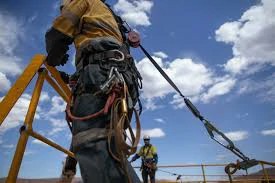


 349,500 Offered Certificates
349,500 Offered Certificates
 24/7 Online Training
24/7 Online Training
 Money Back Guarantee
Money Back Guarantee
 Fully Accredited Courses
Fully Accredited Courses

Created at: 22-02-2025 15:00
Working at heights presents unique challenges and hazards. Whether you are on a construction site, maintaining a building, or engaging in any activity above the ground, understanding the importance of risk assessments cannot be overstated. Risk assessments play a pivotal role in accident prevention, regulatory compliance, and overall workplace safety.
Risk assessments are fundamental in identifying potential hazards related to working at heights. A systematic approach not only improves safety practices but also fulfills legal obligations to ensure a safe work environment. Key benefits of conducting thorough risk assessments include:
Here’s a structured approach for implementing risk assessments before any work at height:
Start by observing the environment and tasks involved. Common hazards include:
Assess the level of risk associated with each identified hazard by considering:
This can be done using a risk matrix to categorize risks by low, medium, or high probability.
Based on the evaluation, implement appropriate control measures:
Safeguards and procedures should be reviewed regularly and updated whenever:
Understanding common risk factors can help in better preparations for working at heights. Some prevalent risks include:
Effective training prepares workers to identify and manage risks proficiently. Certified Working at Heights Training programs focus on:
Online Courses: The convenience of online training allows workers to learn at their own pace and revisit materials as needed.
Having certifications such as Working at Heights Certification Ireland or Working at Heights Certification Dublin validates a worker’s capability to perform safely. Employers benefit from having certified staff, ensuring compliance with employment regulations and enhancing workplace safety.
Many businesses have successfully mitigated risks through thorough risk assessments:
Conducting effective risk assessments is crucial for any organization involved in working at heights. They not only safeguard workers but also help businesses avoid legal issues and enhance their safety culture.
For businesses looking to ensure workplace safety through proper risk assessments, investing in Working at Heights Course is essential. By training your employees, you are setting a foundation for safe practices. Reach out today at [email protected] for more information on our comprehensive safety training programs.